Louis pasteur louis pasteur was born in dole, france on december 27, 1822. his family was poor and during his early education he was an average student who enjoyed art and singing. however, when louis was exposed to science as a teenager, he knew he had found his calling. in 1838, louis went to college to become a science teacher. he earned degrees in mathematics, physics, and chemistry. he then became a chemistry professor at the university of strasbourg. while at university, he fell in love with the daughter of the university's rector, marie laurent. he and marie married in 1849. they had five children, however, three died young from typhoid fever. it was the deaths of his children that drove louis to investigate infectious diseases in order to find a cure. during pasteur's time, people believed that microbes, such as bacteria, appeared due to "spontaneous generation". they thought that the bacteria just appeared out of nowhere. pasteur ran experiments to see if this was true. through his experiments he proved that germs (i.e. bacteria) were living things that came from other living things. they didn't just spontaneously appear . this was a major discovery in the study of biology and earned pasteur the nickname the "father of germ theory". pasteur used his knowledge of germs to investigate how beverages such as wine and milk were spoiled by microbes such as bacteria and molds. he found that heating up the liquids would kill most of the microbes and allow the beverages to last longer and be safer to drink. this process became known as pasteurization and is still done on many foods such as milk, vinegar, wines, cheese, and juices. as pasteur learned more and more about bacteria, he began to think they may be the cause of disease in humans. when the french silk market was threatened by a disease to silkworms, pasteur decided to investigate. he discovered that this disease was caused by microbes. by eliminating the microbes from the silkworm farms, he was able to end the disease and save the french silk business. pasteur continued to investigate with diseases. he found that he could make a weak form of a disease that would cause people to become immune to the stronger form of the disease. he called this weak form a "vaccine". he first discovered this by working with cattle on the disease anthrax. the first vaccine he gave to a human was the rabies vaccine. he administered it to a nine-year-old boy named joseph meister in 1885. today louis pasteur is known as one of the most important scientists in history. his discoveries led to an understanding of microbes and diseases that has helped to save millions and millions of lives. ответьте на вопросы: why did he decide to investigate infectious diseases? his children died he was a professor of chemistry he was running some experiments with bacteria what is "pasteurization"? pasteur's laboratory process of heating beverages examination of bacteria how did pasteur save the french silk business? he invested some money in it he reduced the amount of microbes on the farms he investigated the cause of the disease who did he give his first vaccination to? to himself to animals to a boy what field were his main inventions in? mathematics, physics and chemistry science and business bacteria and diseases
Ответы на вопрос:
i am going to tell you about los angeles. los angeles spans a widely diverse geographic area. primarily a desert basin, the area is surrounded by the san gabriel mountain range and divided by the santa monica mountains. los angeles county has 81 miles of coastline. there are such rivers as the los angeles, the rio hondo, the san gabriel and the ventura rivers.
the climate of los angeles as the climate of southern california has often been described as «perfect» and with good reason. mostly it is sunny and warm with gentle ocean breezes in the summer. the humidity is low with little rain. in fact, there are no unpleasant seasons in los angeles.
the name los angeles is spanish for the angels. in the late 18th century, felipe de neve, spanish governor of california, saw the need to establish a settlement along the river los angeles, the primary purpose for the pueblo was to reaffirm spain's claim over the territory in the face of encroachments by russia in the north and britain from the sea. the settlement would also help to keep spain's california military garrisons supplied and fed. los angeles was officially established by governor felipe de neve on september 4,1781.
governor de neve's statue stands today at the plaza of olvera street in downtown los angeles. later, when mexico became an independent state, california with los angeles was governed by mexicans.
in august of 1846, american soldiers entered los angeles and the stars and stripes flag has flown over the city since january 1847. on february, 1848 the treaty of guadalupe hidalgo was signed and the mexican-american war was finished, california was ceded to the united states. in 1851 the first los angeles city police force was organized.
nowadays the city of los angeles holds many distinctions. los angeles is the entertainment capital of the world, a cultural centre which has more than 300 museums and a paradise of good weather.
it is the only city in the world to host the summer olympics twice. downtown of los angeles is the largest government centre outside of washington, d.c.
los angeles has the only remaining wooden lighthouse in the world. it is located in fermin park in san pedro. los angeles has the largest historical theatre district, located in downtown on broadway.
los angeles is on the leading edge of the growth industries. the los angeles area * digital coast» has more multimedia jobs than silicon valley and new york city combined. the los angeles metropolitan area, with more than 122,000 jobs in the fashion industry, has surpassed new york's fashion district work force.
the population of los angeles is about four million people. los angeles ranks as the second largest city in the nation behind new york city, in los angeles there are people from about 140 countries^speaking approximately 86 different languages and currently call los angeles home.
Популярно: Английский язык
-
Раскрой скобки, поставь глаголы в present simple или present...
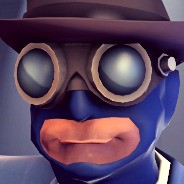 пожалуйстапомогите1508.10.2022 04:35
пожалуйстапомогите1508.10.2022 04:35 -
Вставь местоимения my,your,his или her.1)i have got a is little.2)...
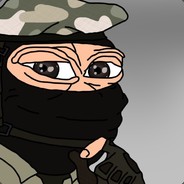 efr4713.06.2020 19:01
efr4713.06.2020 19:01 -
Как переводиться зеленый салат(листовой) на ?...
 PaymLaim18.11.2020 10:22
PaymLaim18.11.2020 10:22 -
Переведите, . но не по ! заранее . я бы хотел поговорит об изучении...
 Dashakon5804.03.2022 08:14
Dashakon5804.03.2022 08:14 -
Перевести грамотно 1. переведите на язык 5 частей текста «famouspeople»:...
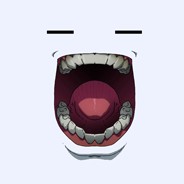 ninapopova19714.10.2020 08:46
ninapopova19714.10.2020 08:46 -
Complete the crossword with the of the week перевод...
 naranovnaran0820.10.2020 23:09
naranovnaran0820.10.2020 23:09 -
Составить предложения на про школы...
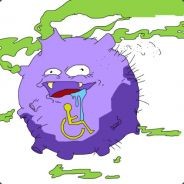 ЮлічкаВдовіна01.12.2021 22:41
ЮлічкаВдовіна01.12.2021 22:41 -
Английский Максимальные даю...
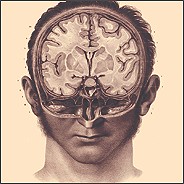 sooooooyeees10.06.2021 23:34
sooooooyeees10.06.2021 23:34 -
Задайте общий вопрос и постройте отрицательное предложение....
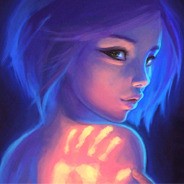 alina2004100225.03.2020 02:21
alina2004100225.03.2020 02:21 -
Как переводится словосочетание heat this...
 lendo219.05.2020 15:37
lendo219.05.2020 15:37
